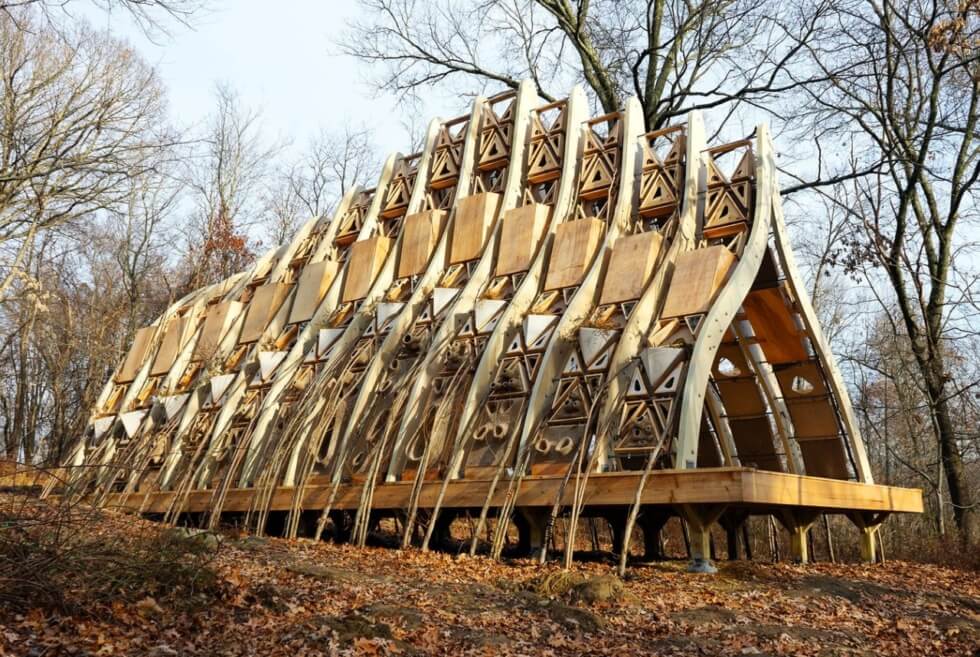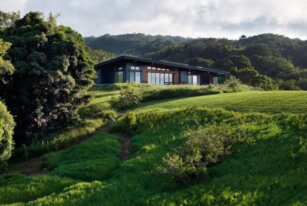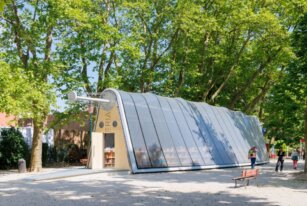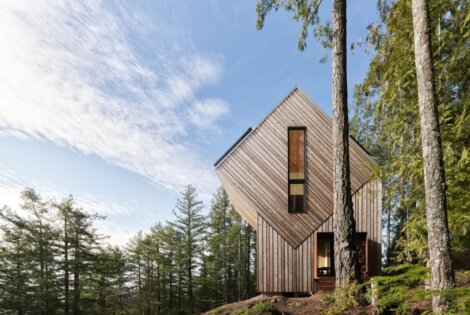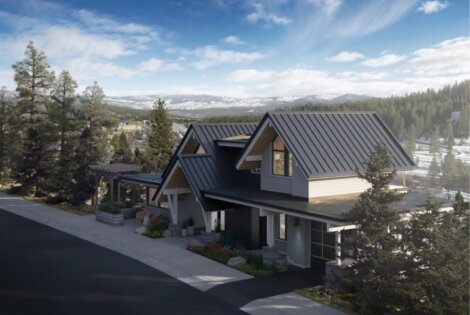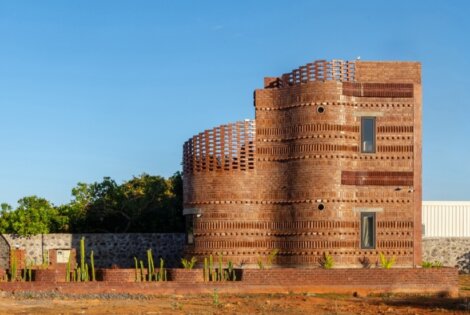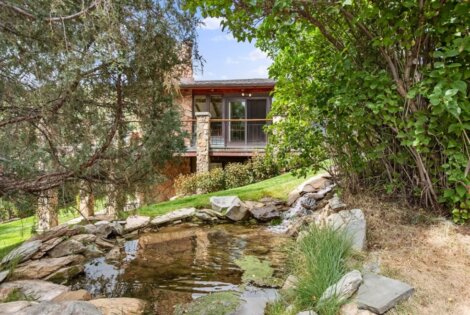Terreform ONE has constructed Fab Tree Hab, a 1000 sq. ft. terrestrial reef and grafted living tree structure located in New Windsor, New York, near Storm King Art Center. It’s a multispecies habitat that serves as an observatory and education center for people and as a wildlife refuge.
The structure pushes the boundaries of regenerative design and minimizes carbon footprint .It combines indigenous tree-grafting techniques with computationally designed cross-laminated timber (CLT) arch scaffolds so it comes out as an extension of its surrounding ecosystem.
Terreform ONE used durable, bio-based alternatives instead of harmful industrial materials on the Fab Tree Hab. Concrete is hardly used for its foundation while the facade elements are either cedar or jute treated with beeswax and pine rosin to prevent decay. This habitat generates life as it includes 30-foot-tall tree clusters sourced from a local biomass farm.
These tree clusters are shaped on site within large recyclable timber scaffolds and in years’ time, they will grow to support the modular multispecies wall system. Meanwhile, wall elements are made from a mix of handmade crocheted jute fibers and 3D-printed bioplastic volumes. The volumes serve as micro-habitats and food webs for plants and animals to thrive, thus increasing biodiversity in the process.
Fab Tree Hab, then, is as dynamic as a forest. Terreform One describes it as “an embodiment of 100% living matter, upending human-centered and energy-intensive construction practices. The system can act as a major catalyst to improve air quality, sequester carbon, increase biodiversity, as well as provide refuge and food sources to local fauna.” Instead of cutting down trees to make a building, the structure grows more trees and thrives in all seasons and diurnal events. It leverages the self-healing and ecologically responsive characteristics of biological systems because it uses bio-based construction elements.
Check It Out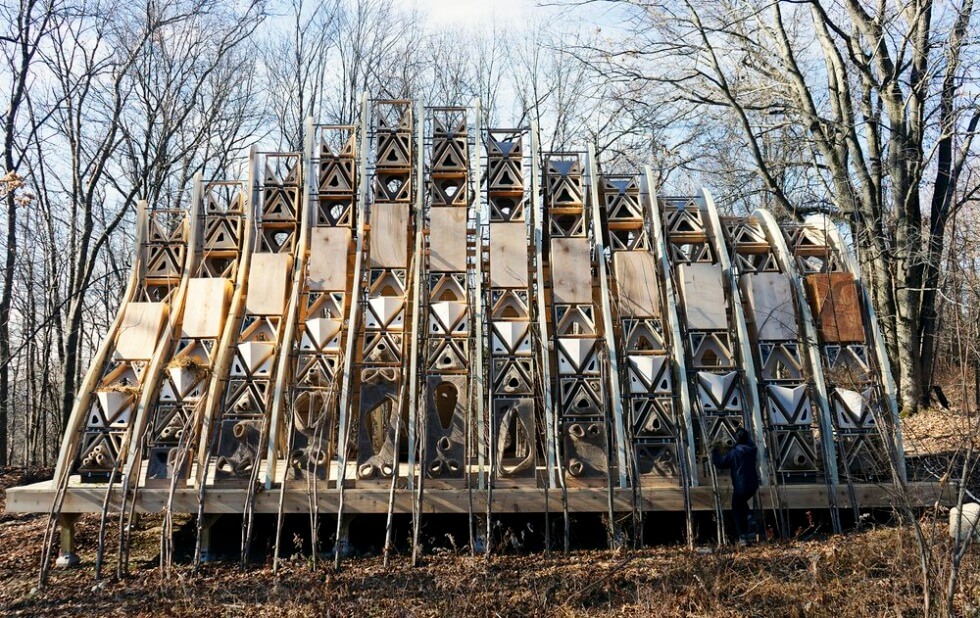
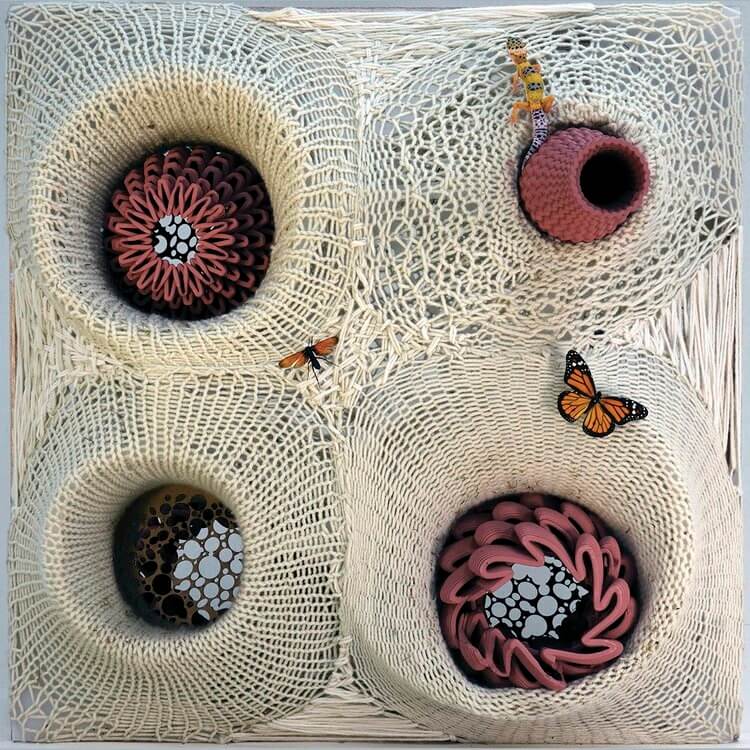

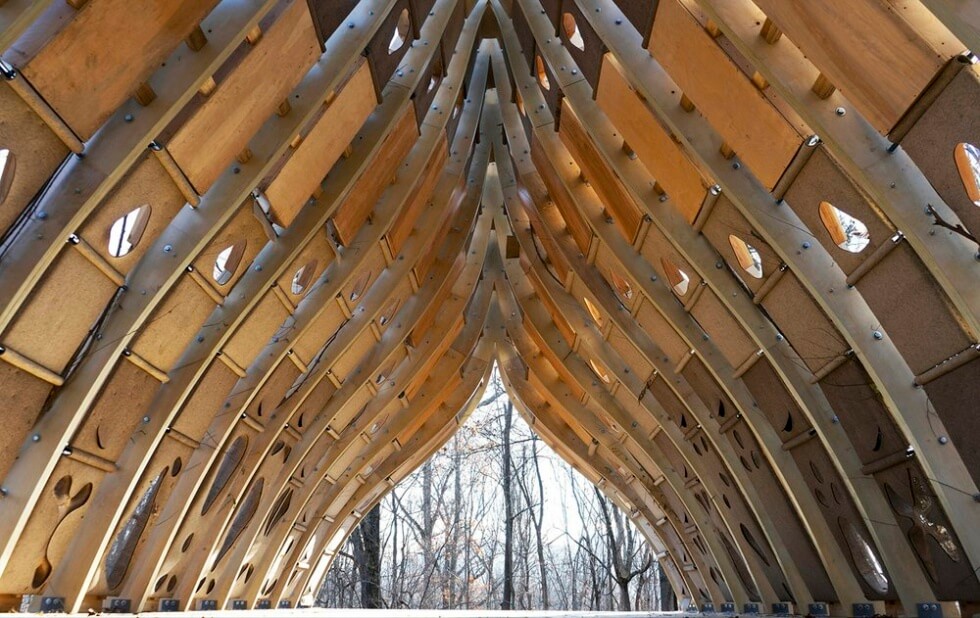
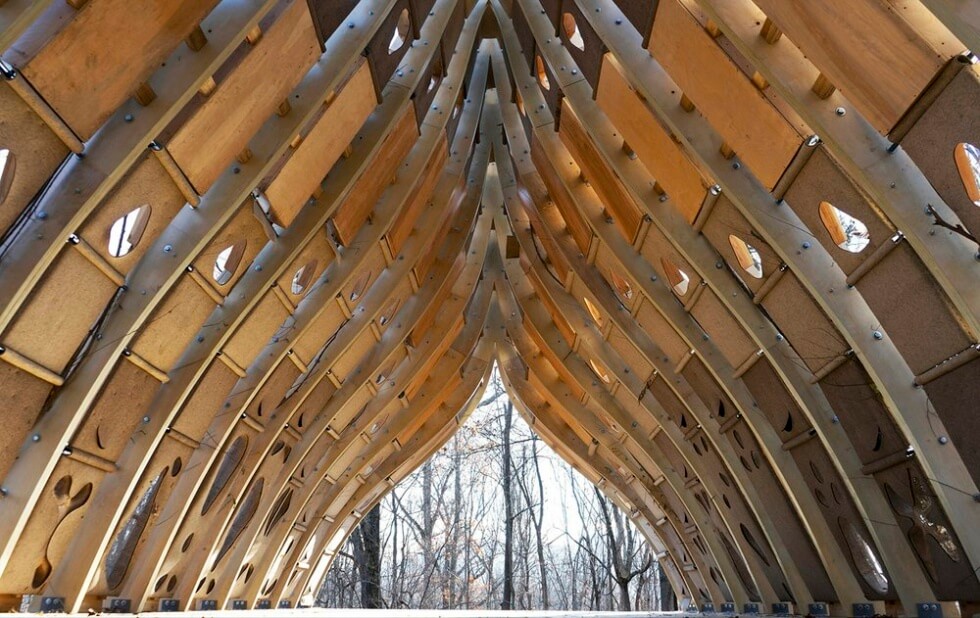
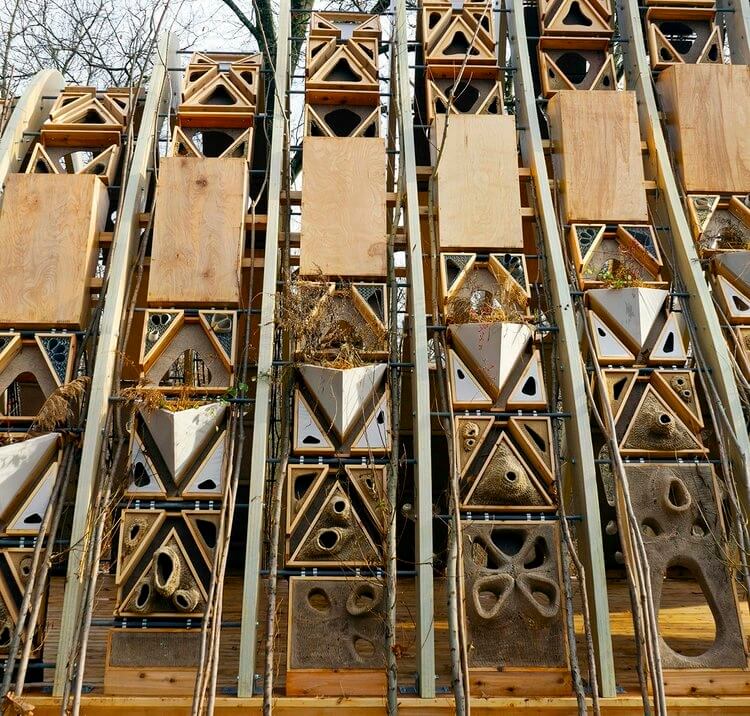

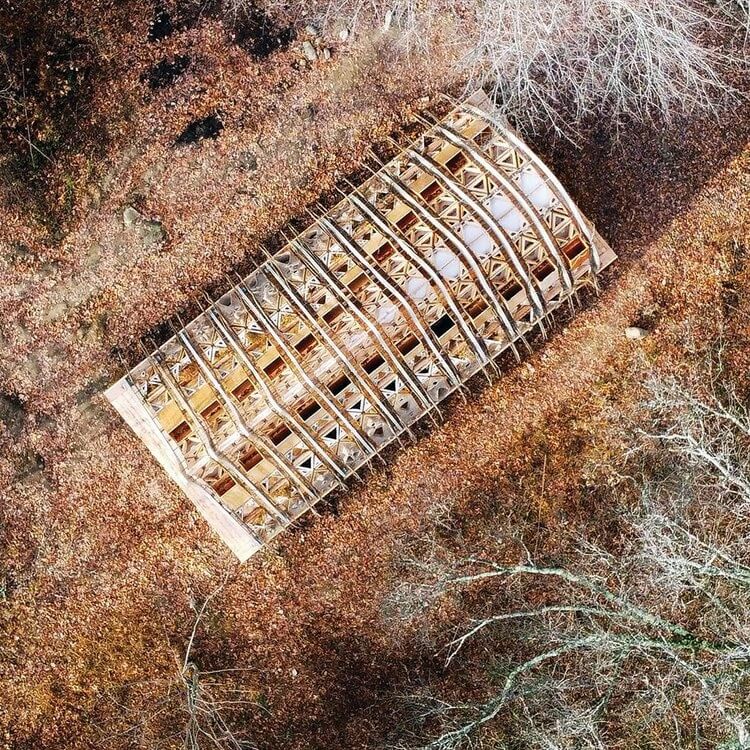
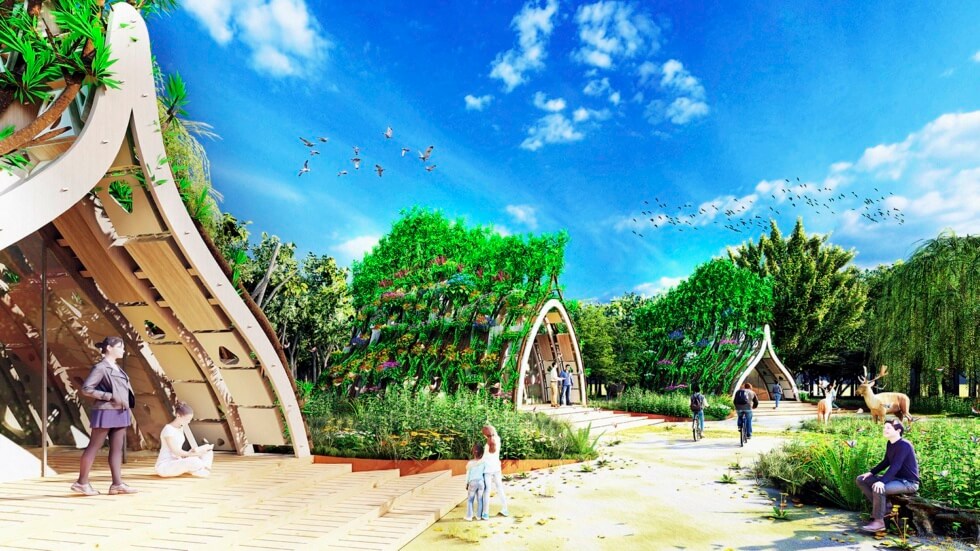
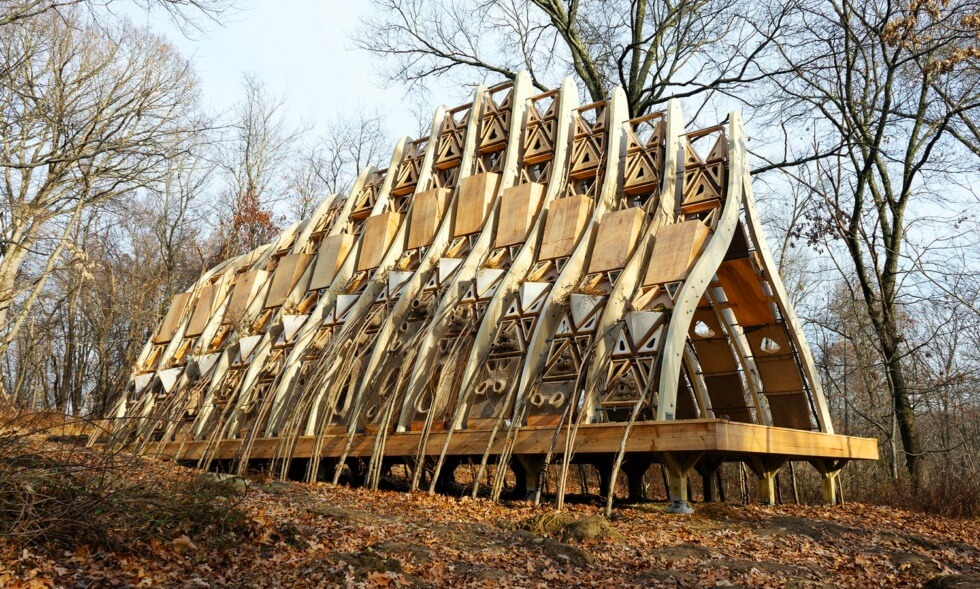
Images courtesy of Terreform One

